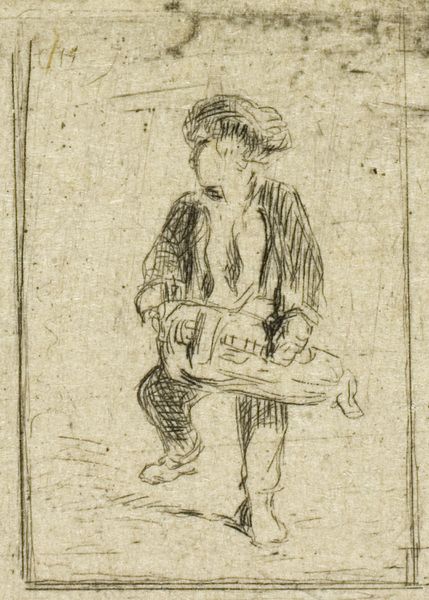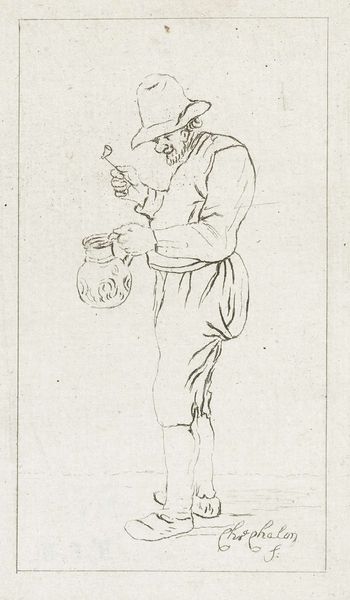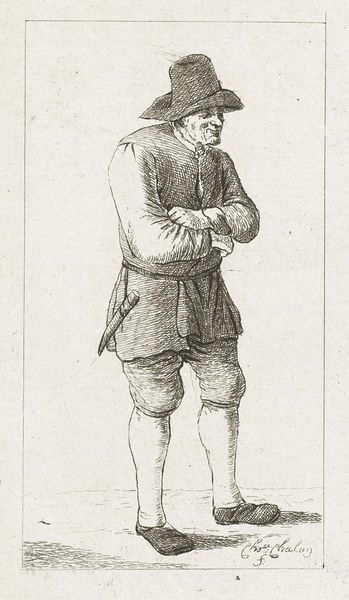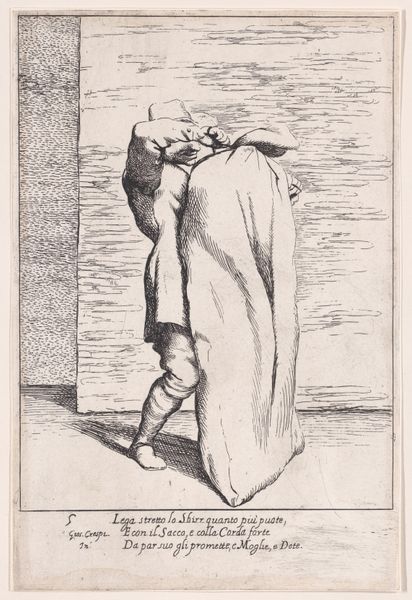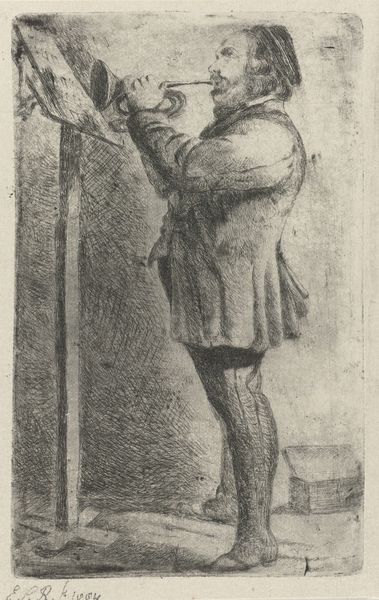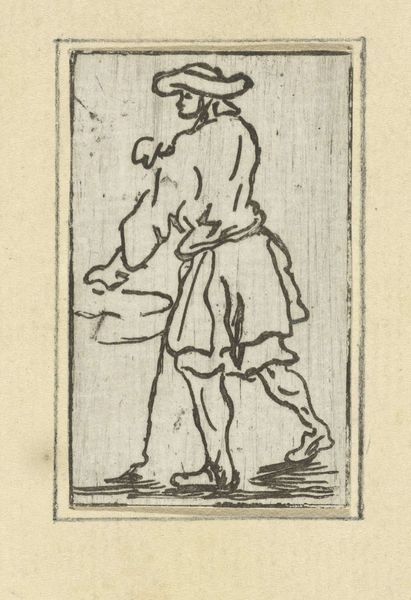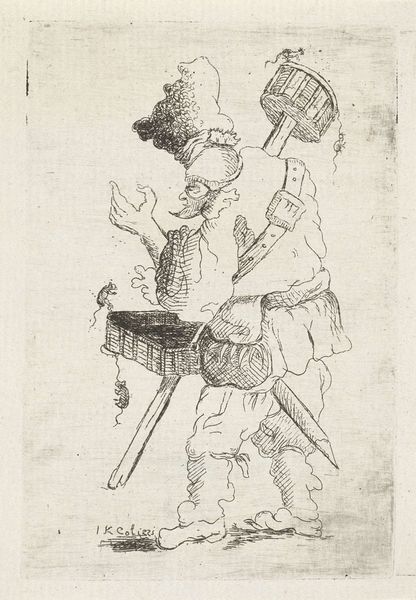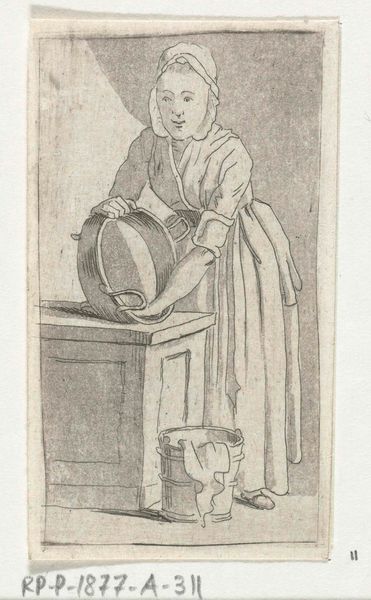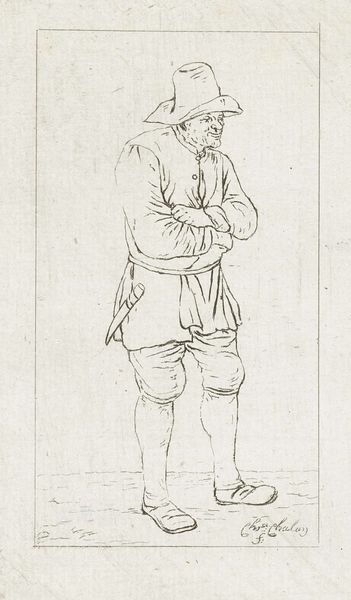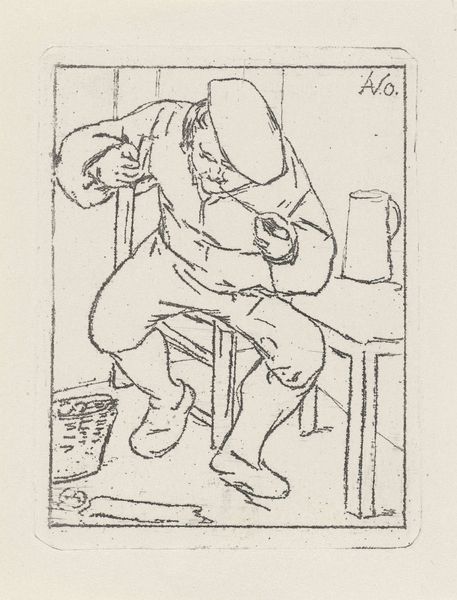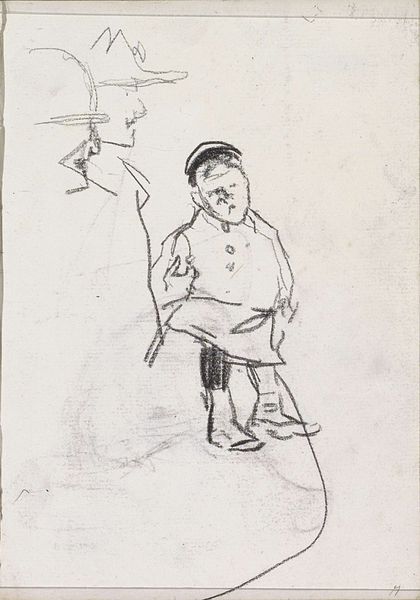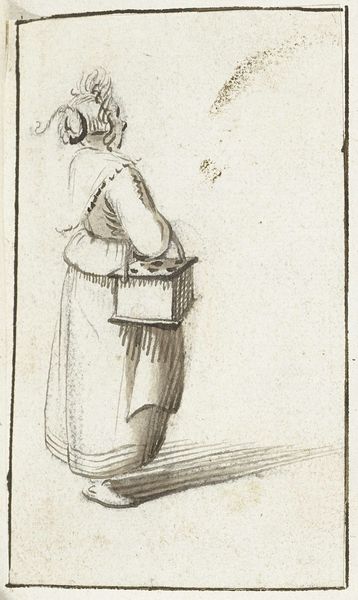
drawing, graphite
#
drawing
#
cubism
#
figuration
#
graphite
Copyright: Public domain
Curator: This graphite drawing is Kazimir Malevich's "Carpenter," created in 1911. Editor: It strikes me as…deliberately unfinished. The heavy use of graphite creates this gray haze and a rough energy, as if caught mid-action. Curator: Exactly! Consider the tools—absent in form, yet palpable through their inferred use. He’s interacting with a textured form – what appears to be a wooden crate with jagged elements protruding – all simplified shapes built with short graphite lines. Editor: The simplified shapes draw my attention. Those triangular patterns on the box – they almost vibrate with implied motion and sharp meaning, like miniaturized arrows. There's a direct connection being alluded to between labor, tools, and perhaps direction, or intention? Curator: Malevich, even at this stage, was experimenting with the deconstruction of form. A carpenter, representing the act of creation itself, rendered not in perfect detail but reduced to essential gestures and angular lines, highlighting the work and worker. Editor: This resonates. Look at how the carpenter's posture seems to mimic the angularity of his work; he embodies it, leaning forward as if projecting intent into the material itself. Curator: I see Malevich making a statement about labor. A manual process distilled into graphic simplicity—an accessible yet poignant portrayal. Editor: I’m intrigued by this bridge between representation and symbolism. Malevich shows us the essence of making through potent geometries, creating something profoundly resonant even in its incompleteness. Curator: So, for me, I observe a testament to art that isn’t separate from real life but woven into its processes. Editor: And for me, this Carpenter leaves me reflecting on the emotional language inherent in tools, labor, and our intrinsic link to both.
Comments
No comments
Be the first to comment and join the conversation on the ultimate creative platform.

